Are your hotel’s exteriors looking dull at night? Bland lighting can fail to attract guests and create a memorable atmosphere, leading to missed opportunities for a premium experience.
Hotels use RGBW LED floodlights to create stunning, dynamic, and personalized atmospheres. By highlighting architectural features and landscapes with customizable colors and scenes, they transform properties into captivating destinations, boosting allure and guest satisfaction, and ultimately driving positive reviews and repeat business.
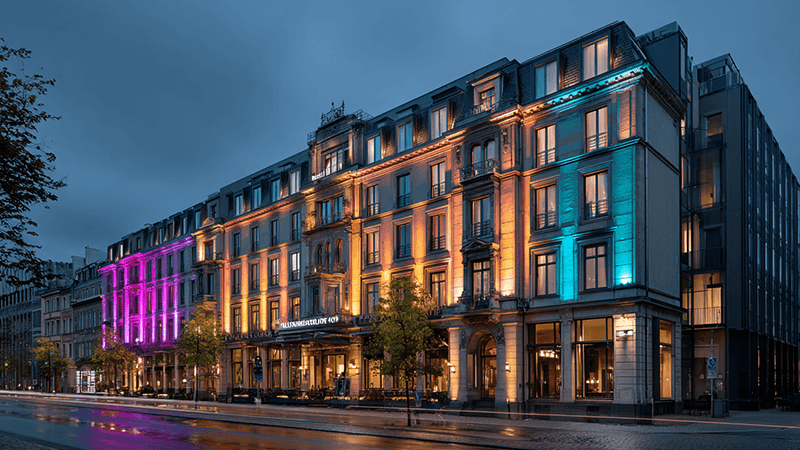
You see the potential, but how do you get it right? In my years of manufacturing and supplying lighting, I’ve seen that effective illumination is more than just brightness. It’s about creating an emotional connection and telling a story. It’s the silent host that welcomes guests and makes them feel special. Let’s explore how lighting shapes the entire guest journey and how you can master it.
How Does Lighting Fundamentally Impact the Guest Experience in Hotels?
Are guests perceiving your hotel as just a place to sleep? Poor or uninspired lighting can make even a beautiful property feel unwelcoming and generic, failing to create a lasting impression.
Lighting directly influences a guest’s mood, perception of safety, and overall impression of the hotel. Well-designed lighting creates a welcoming ambiance, guides guests intuitively, and enhances the beauty of the space, making their stay more comfortable, memorable, and enjoyable from the moment they arrive.
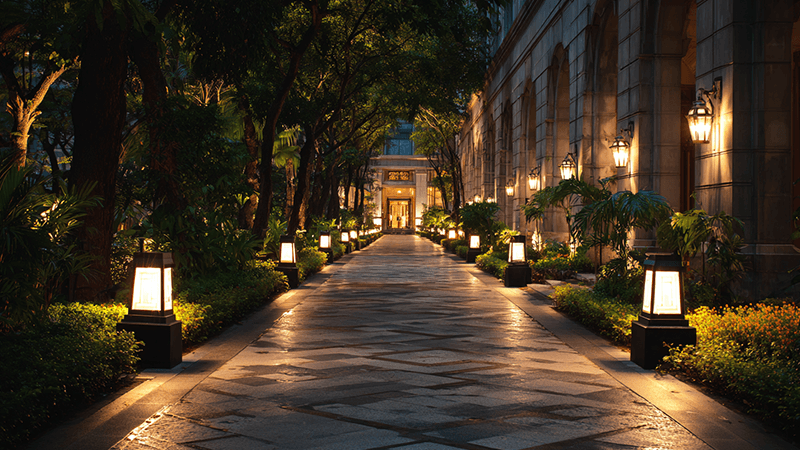
Think of lighting as the first handshake. It happens before a guest even speaks to your staff. It sets the entire tone for their stay. From my experience helping resorts design their lighting schemes, the impact can be broken down into a few key areas that every hotel manager and purchasing director should understand.
First Impressions Matter: The Arrival Experience
The moment a guest turns onto your property, their experience begins. The lighting on your façade, entrance, and landscaping is your first opportunity to say, "You’ve arrived somewhere special." I remember visiting a coastal resort for a project consultation. The long driveway was lined with palm trees, each one gently illuminated from below with warm, soft light. It was simple, but incredibly effective. It immediately shifted my mood from travel-weary to relaxed and excited. This is the power of a strong first impression. Using RGBW floodlights, you can paint your building with a signature color or a gentle, welcoming glow that makes it stand out as a beacon of luxury and comfort.
Creating Ambiance and Defining Spaces
Lighting is a powerful tool for controlling mood. Warm light (around 2700K-3000K) feels cozy and relaxing, perfect for lounge areas or tranquil gardens. Cooler light can feel more energetic and modern, which might work for a vibrant poolside bar. With RGBW fixtures, you are not locked into one choice. You can define different zones with light. Imagine a pool area bathed in a cool, calming blue at night, while a nearby dining terrace glows with a warm, inviting amber. You can create distinct worlds within the same property, all controlled from a central point. This transforms the hotel from a static building into a dynamic environment.
Guiding Guests and Ensuring Safety
Beyond aesthetics, lighting has a critical functional role. It must guide guests safely and intuitively through the property at night. Dark pathways are not just a safety hazard; they create anxiety and make guests feel insecure. Well-lit walkways, highlighted steps, and clear signage make navigation effortless. This isn’t about flooding areas with harsh light. It’s about using light strategically to create a sense of security and confidence. Good lighting makes guests feel cared for and safe, which is a fundamental part of a positive hotel experience.
| Feature |
Poor Lighting Effect |
Good Lighting Effect |
| Arrival |
Uninviting, hard to find the entrance, feels unsafe. |
Welcoming, highlights architecture, conveys luxury. |
| Pathways |
Dark spots, confusing routes, potential trip hazards. |
Clear, safe walkways, intuitive navigation. |
| Public Areas |
Dull, uninspiring, feels generic and flat. |
Vibrant, defines spaces, creates a distinct mood. |
| Guest Perception |
The hotel feels cheap, unsafe, and forgettable. |
The hotel feels premium, secure, and memorable. |
How Can You Actively Enhance the Guest Experience with Smart Lighting Choices?
Is your lighting static and one-dimensional? A single look for all seasons and events fails to engage guests and can make your property feel less dynamic and exciting over time.
Enhance the guest experience by using dynamic lighting to create themed environments. You can easily program custom scenes for holidays, seasons, or special events like weddings. This customization makes the property feel alive and responsive, offering unique visual experiences that guests will love and share.
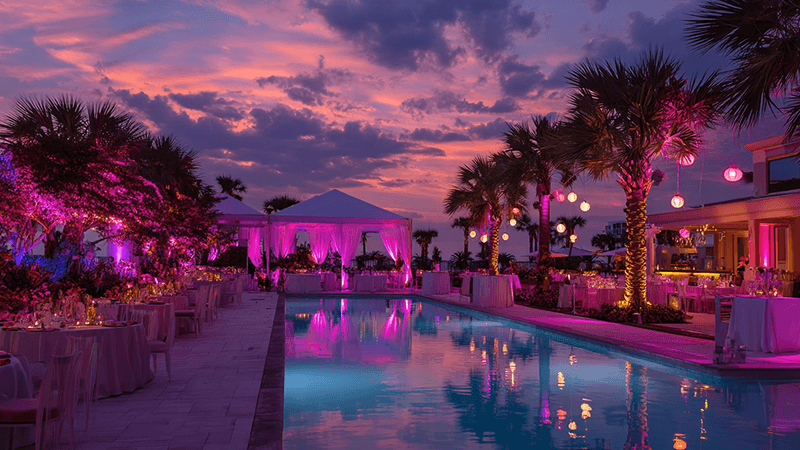
The real magic of modern LED lighting, especially RGBW, is its flexibility. You are no longer limited to a single, static look. You can now treat your property like a canvas that changes to suit any occasion. This is how you move from providing a service to creating an experience.
Dynamic Scenes for Events and Seasons
This is where RGBW technology truly shines. Imagine your hotel’s facade and grounds transforming throughout the year.
- Holidays: Bathe the property in warm reds and greens for Christmas, or elegant golds for New Year’s Eve.
- Seasons: Use soft pastels in the spring, vibrant tones in the summer, and rich ambers in the autumn.
- Special Events: For a wedding, you could match the lighting to the couple’s chosen color theme. For a corporate event, you can use the company’s brand colors.
I worked with a client, a large conference hotel, that used this to great effect. They would program the exterior lighting to match the branding of the company hosting a major conference. It was a small touch, but the feedback was incredible. Attendees felt a sense of ownership and importance from the moment they arrived. These scenes can be pre-programmed and scheduled to change automatically, creating a seamless and impressive effect every single night.
Highlighting Architecture and Landscape
Good lighting doesn’t show you the light fixture; it shows you what the light is illuminating. This is a core principle of high-end design. Instead of just flooding an area, you can use precise beam angles to "paint" specific features.
- Grazing: Aiming a light beam close and parallel to a textured surface, like a stone wall or brick facade, brings out its depth and character.
- Uplighting: Placing lights at the base of trees, columns, or sculptures creates a dramatic, majestic effect.
- Silhouetting: Lighting a wall behind a tree or statue creates a dark, defined outline of the object.
With RGBW, you can add another layer. A subtle touch of blue on a water feature can make it look more serene and mystical. A soft green on trees can make them appear more lush and vibrant. It’s about using light to reveal the hidden beauty of your property.
What Are the Real-World Benefits of Choosing RGBW LED Light Fixtures?
Are you worried about soaring energy bills and constant maintenance hassles? Traditional lighting is expensive to run and requires frequent replacement, eating into your budget and causing operational headaches.
RGBW LED fixtures offer immense benefits. They provide total color control for both vibrant hues and pure white light. They are highly energy-efficient, dramatically lowering electricity bills, and their long lifespan means minimal maintenance costs, making them a smart and sustainable investment.
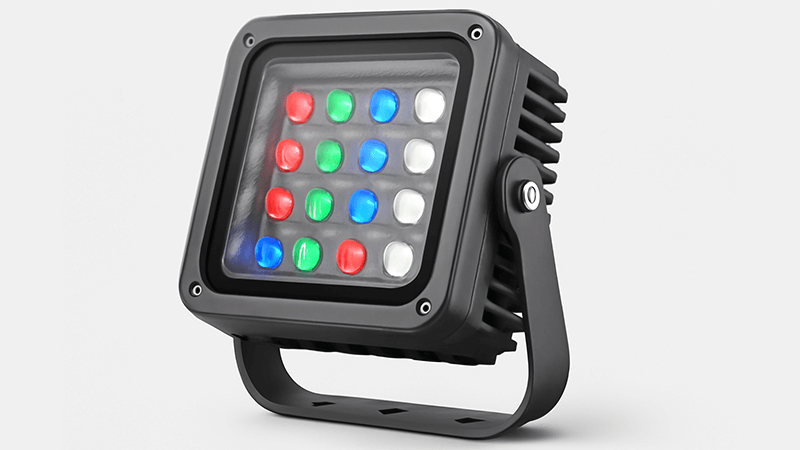
As a manufacturer, I’m passionate about the technology inside these fixtures. For a purchasing manager like Shaz or a hotel owner, the practical benefits are what matter most. Upgrading to RGBW LED isn’t just an aesthetic choice; it’s a sound business decision with a clear return on investment.
Unmatched Versatility and Color Quality
Let’s quickly break down the name: RGBW stands for Red, Green, Blue, and White. The fixture has separate LEDs for each of these colors. The key here is the "W" – the dedicated white LED. While you can mix Red, Green, and Blue to create a version of white, it often looks pasty or has a color tint. The separate white chip allows you to produce a pure, crisp, high-quality white light whenever you need a classic, elegant look. This means a single fixture can do everything. It can produce millions of vibrant colors for a party atmosphere one minute, and then switch to a sophisticated, architectural white light the next. This versatility eliminates the need for multiple types of fixtures, simplifying inventory and design.
Significant Cost and Energy Savings
This is the benefit that most impacts the bottom line. LEDs are incredibly efficient. They use up to 80% less energy than the old halogen or metal halide lamps they often replace. For a resort with hundreds of lights running all night, the savings on electricity bills are substantial. But the savings don’t stop there. The lifespan of a professional-grade LED fixture is often 50,000 hours or more. Compare that to a halogen bulb that might last only 2,000 hours. This drastic difference means you are not constantly paying for replacement lamps, nor are you paying for the labor and equipment (like lifts) needed to install them. It reduces disruption and maintenance budgets significantly.
| Feature |
Traditional Halogen/Metal Halide |
RGBW LED Floodlight |
| Energy Use |
High (e.g., 500W) |
Low (e.g., 100W for same output) |
| Lifespan |
2,000 – 15,000 hours |
50,000+ hours |
| Maintenance |
Frequent bulb/ballast replacement |
Minimal to none |
| Color Options |
Single color or requires clumsy filters |
Millions of colors + pure white |
| Control |
Simple On/Off |
DMX, scheduled scenes, dimming |
Environmental Responsibility
Today, being "green" is not just a trend; it’s a core part of a brand’s identity that guests care about. Switching to LEDs is a very visible way to demonstrate your commitment to sustainability. The lower energy consumption directly reduces your property’s carbon footprint. Furthermore, unlike some older lighting technologies, LEDs contain no harmful mercury, making them easier to dispose of safely at the end of their very long life. Promoting these eco-friendly practices can be a powerful marketing tool.
How Can You Avoid Common Lighting Mistakes That Ruin the Guest Experience?
Have you seen hotels with gaudy, flashing lights or bright glares shining into windows? These common mistakes cheapen a brand and annoy guests, doing more harm than good.
Avoid these pitfalls by prioritizing guest comfort above all. Ensure no light spills into rooms by using shielded fixtures. Use elegant, subtle effects instead of tacky, oversaturated colors. And always work with a professional lighting designer(https://justlampshades.com/blogs/articles/a-comprehensive-guide-to-hotel-lighting?srsltid=AfmBOor0pKEs6QYlWV_S4yqHv_oy7LpzRny1O1D8zQxw4q7N7UrTCb4e)[^8]er to create a cohesive, effective, and energy-efficient plan.
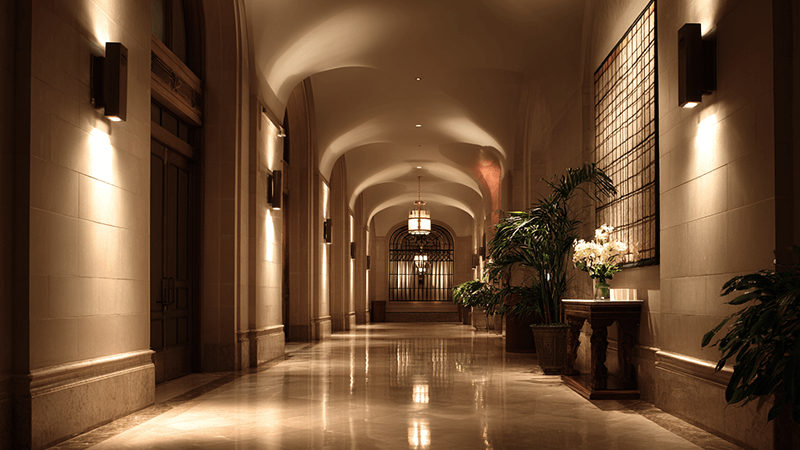
Having the best RGBW LED floodlights is only half the battle. How you use them is what determines success or failure. I’ve seen expensive projects fail because they ignored a few fundamental rules. To truly enhance the guest experience, you must avoid these common but costly mistakes.
Mistake 1: Light Pollution and Guest Disturbance
This is the number one rule: do not let your exterior lighting shine into guest rooms. It sounds obvious, but it happens all the time. I once stayed at a beautiful resort where a powerful, poorly aimed floodlight was illuminating a magnificent oak tree. Unfortunately, it was also shining directly into my third-floor window. I had to keep the blackout curtains shut, which meant I couldn’t enjoy the view. A simple mistake completely ruined a key part of the room’s appeal. The solution is to use high-quality fixtures with built-in shields, louvers, or hoods to control the light output. Precise planning of placement and beam angles is not a luxury; it’s a necessity. The goal is to illuminate the target, not the entire area and certainly not the guest rooms.
Mistake 2: Over-the-Top and Tacky Effects
With the power of millions of colors at your fingertips, it can be tempting to use them all at once. This is a trap. Remember that "less is more." The goal is to create an atmosphere of luxury and sophistication, not a carnival. Avoid using highly saturated, gaudy colors or fast-strobing effects unless it’s for a very specific, short-term event. For your hotel’s everyday look, focus on elegant, refined colors and slow, graceful transitions. Think of your lighting as a fine wine, not a sugary soda. A subtle, well-executed design will always feel more premium.
Mistake 3: Lack of a Professional, Holistic Plan
Simply buying good lights and having an electrician install them is not a lighting design. The best results always happen when a professional lighting designer works alongside the architect and landscape architect from the very beginning. They understand the technical aspects—beam angles, illuminance levels, color rendering—and can translate an artistic vision into a practical plan. As a manufacturer, I can tell you that my most successful client projects are collaborative. We provide the tools, but the designer provides the vision. This ensures the lighting feels integrated into the property’s design, creating that seamless effect where you see the beautiful light, not the fixtures themselves.
Mistake 4: Wasting Energy Despite Using LEDs
It’s an interesting paradox: you can install energy-efficient LEDs and still be wasteful. If your lights are running at 100% brightness all night long, even in areas with no traffic, you are wasting energy and money. This is where smart controls are essential. A good control system should include:
- Timers: Automatically dim the lights to 30% after midnight and turn them off completely at dawn.
- Photosensors: Ensure lights only turn on when it’s actually dark outside.
- Motion Sensors: For less-trafficked areas, lights can be kept dim or off, and then brighten when someone approaches.
Using smart controls maximizes your energy savings, extends the life of the fixtures even further, and reinforces your brand’s commitment to being truly green.
Conclusion
RGBW LED floodlights can transform your hotel into an unforgettable destination. With smart, professional design, you can create magical experiences, enhance your brand, and operate efficiently, wowing every single guest.